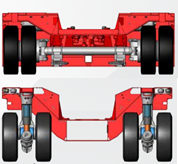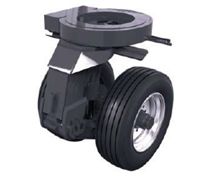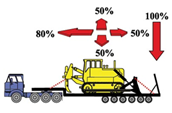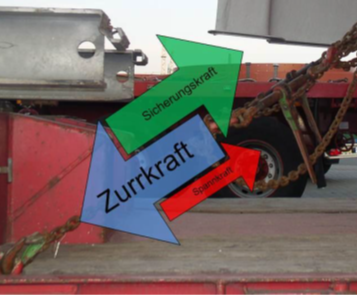
















Masterclass breakbulk shipping and heavy transport |
|||||
|
Dicipline: Transportation and Logistics |
|
Educational Level: Masterclass |
Duration: 3 month, 12 online sessions |
|
Total cost 1200 EUR including certificate |
Next starting moment: September 2022 |
More infomation: Download brocure |
|||
Shipping standard containers, pallets and other common cargo around the world is already very challenging in today’s world. Truckdriver shortage, expensive sea freight, blank sailings, lockdowns, port congestion is for most logistic people already a daily headache. Now picture yourself scheduling and transporting heavy cargo from one part in the world to another considering the problems we just described. If you think standard cargo is already difficult and challenging, oversized, and heavy cargo is even much worse and risky. In the breakbulk and heavy transport world nothing can be compared to general cargo, everything is different and needs a special touch. It is all about knowing and experience, only a handful of people compared to general cargo know their way around. Even experienced people, who ship heavy cases around the world frequently, must deal with damages, time delays and unexpected additional costs. Image the risks some unexperienced person had to face and the chaos that could happen if important things are not take care of. Accidents due to poor securing on equipment, trucks overloaded, not catching mother vessels, police intercepting journey etc. We created this masterclass breakbulk logistics heavy transport for everyone who has an important role in the breakbulk supply chain. For example, the logistic buyer, the engineer, the cost calculator, the schedular and the sales manager. We typically find these jobs at forwarders, sea- and airfreight carriers, road transport companies, shippers, and producers. Popular branches are wind power, construction equipment, energy, and general machinery. |
|||||
Self-study is desired but not necessary, all teaching material will be dealt with in roughly 10 sessions of 2,0 hours (always on Saturday morning 10:00-12:00 CET) The teaching material comprises 10 modules consisting of 700 pages of theory and information. In addition, various calculation models are made available. |
|||||
| How to register yourself | Send your peronal (including birthdate) and company details (including VAT number) per Email to our office and you will receive a confirmation by Email. Rozenbergswijk 21 8411 KN JUBBEGA |
||||
Scope and details masterclass breakbulk shipping and heavy transport • Heavy goods up to 100 tonnes unit weight
|
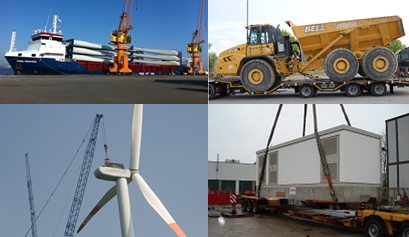 |
||||
| 1.0 Introduction heavy transport, branches and indivisible cargo 1.1 What are heavy and OOG transports? 1.2 Where do we find heavy and OOG transports? 1.3 Glossary heavy transport 1.4 The concept of indivisible cargo 1.5 Examples heavy transports different branches 1.6 Freight forwarder versus carrier, 1PL to 4PL 1.7 Multimodal heavy transport solutions |
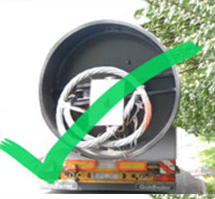 |
||||
| 2.0 Law and permits heavy transport 2.1 Driving and resting times 2.2 Road Traffic Licensing Regulations (StVZO) 2.3 Fundamental laws for heavy transport. 2.4 Permits according to § 70 StVZO 2.5 Permits according to § 29 & $ 46 2.6 Example request permit to $ 29 2.7 Regulation RGST 2013 2.8 Delays and risks during heavy transport 2.9 Authorization permits, requirements and glossary 2.10 Common rates permits pivot cars and VLM 2.11 Planning heavy transport 2.12 Police escort |
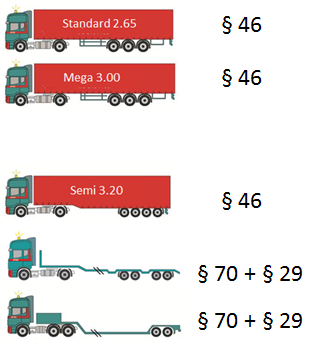 |
||||
| 3.0 Cabotage & licensing heavy transport Europe 3.1 Benefits of axle schematic with permits 3.2 Permits & requirements and extra costs in Germany 3.3 Permits & requirements and extra costs in Austria 3.4 Permits & requirements and extra costs in France 3.5 Permits & requirements and extra costs in Benelux 3.6 Permits & requirements and extra costs in East-Europe 3.7 Cabotage rules Europe + example 3.8 Problems with European OOG transports |
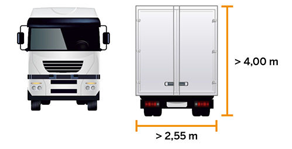 |
||||
4.0 Vehicle engineering 4.1 The basic: Carry or tow loads 4.2 European maximum dimensions 4.3 Calculation of axle loads 4.4 Tractor saddles & kingpin 4.5 Type of tractor units 4.6 Difference technical and approved payload 4.7 Trailer axle technology and load capacity 4.8 Classic axles 4.9 New axle technology 4.10 Air and hydraulic suspension 4.11 Calculation of payload 4.12 Mega trailers & flatbeds trucks 4.13 Semi low loaders & low beds 4.15 Heavy low lowbed configurations 4.16 Low bed with earthmover bridges 4.17 Low beds with intercept dolly 4.18 Special loader for high & oblique loads 4.20 Modular system vehicles 4.21 Build heavy duty module based on modules 4.22 SPMT Self-Propelled Modular 4.23 HIAB Trucks, truck crane 4.24 Truck types for wind power parts 4.25 Rotor blade vehicles, Super Wing carrier 4.26 Special trucks for tower sections 4.27 Low beds with vessel bridges 4.28 Cup Trailer 4.29 Transport escort BF3, BF4 4.30 Training & permits BF3 drivers 4.31 Cost calculation heavy transport 4.32 Day rate calculation |
|
||||
| 5.0 Securing loads and examples of accidents 5.1 Liability and responsibility 5.2 Forces arsing during transport 5.3 Principle of load securing 5.4 Freestanding cargo 5.5 Securing loads by lashing 5.6 Fixed load securing 5.7 Combined load securing 5.8 Lashing straps 5.9 Lashing chains 5.10 Anti-slip mats 5.11 Friction forces coefficient 5.12 Lashing points on the vehicle 5.13 Examples of securing heavy loads 5.14 Example of concrete house not properly secured 5.15 Accidents due to insufficient load securing 5.16 Low bed and railroad intersections 5.17 Long vehicles and accidents in curves 5.18 Accidents with heavy duty vehicles |
|
||||
| 6.0 Crane technology, load calculation & deployment 6.1 Crane technology, the basics 6.2 Manufacturers & glossary crane types 6.3 Telescopic crane models 6.4 Crawler crane models 6.5 Rate structure telescopic cranes 4 x A 6.6 Mobilisation calculation 6.7 Differing in crane rates throughout Europe 6.8 Working with crane payload tables 6.9 Unloading of inland vessels with telescopic crane 6.10 Unloading of trucks with telescopic crane 6.11 Lifting Study 6.12 Influence of wind and ground pressure |
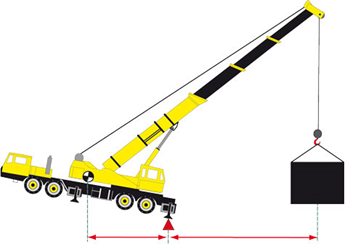 |
||||
| 7.0 Sea freight, inland barges, breakbulk, incoterms & port handling 7.1 Incoterms sea freight 7.2 Type of cargo 7.3 Roro cargo 7.4 Containerised cargo 7.5 Break bulk cargo 7.6 Project cargo 7.7 Line and tramp shipping, Breakbulk on containerships 7.8 Type of ships 7.9 RoRo Ships 7.10 General purpose ships 7.11 Calculate freight 7.12 Surcharges 7.13 BAF,CAF, PCS,ISPS, THC, HWC,PSS 7.14 LWS, LSS,ERS 7.15 Bill of loading 7.17 Parties involved 7.18 Letter of credit 7.19 Liability 7.20 Insurance 7.21 Solas 7.22 Lashing, securing & welding 7.23 Movement at sea 7.24 Loadplan 7.25 Port operations and reloading 7.27 Inland barges, type of ships 7.28 Waterways in Europe 7.29 Port handling |
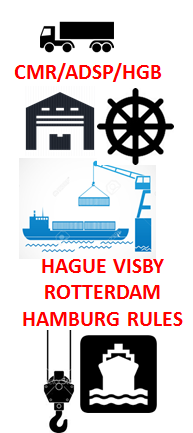 |
||||
| 8.0 Negotiation logistics projects, liability, calculation and contracts |
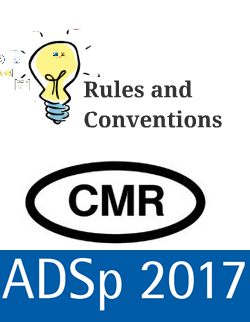 |
||||
| 9.0 Lessons learned, examples mistakes in decisions 9.1 Truck overloaded and false permits 9.2 Stability rules for transporters 9.3 Examples tipping over SPMT's |
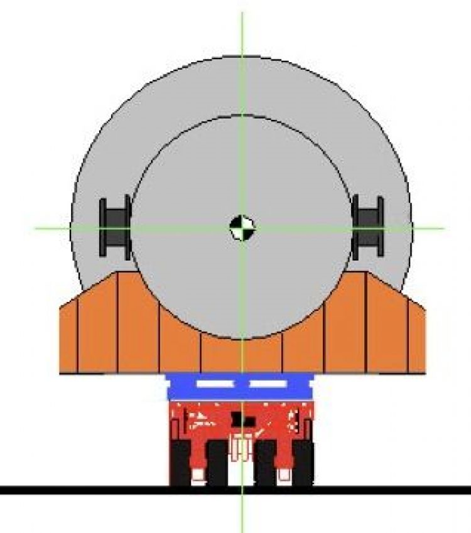 |
||||
|
|
OfficeRozenbergswijk 21 8411 KN JUBBEGA |
Other WebsitesInterim-xl.deInterim-xl.com Breakbulk-logisics.com Vandermeer-advies.nl |
Other linksTender ConsultancySchwertransport Schulung Schwertransport Seminar Ihr Einkaufsberater |
